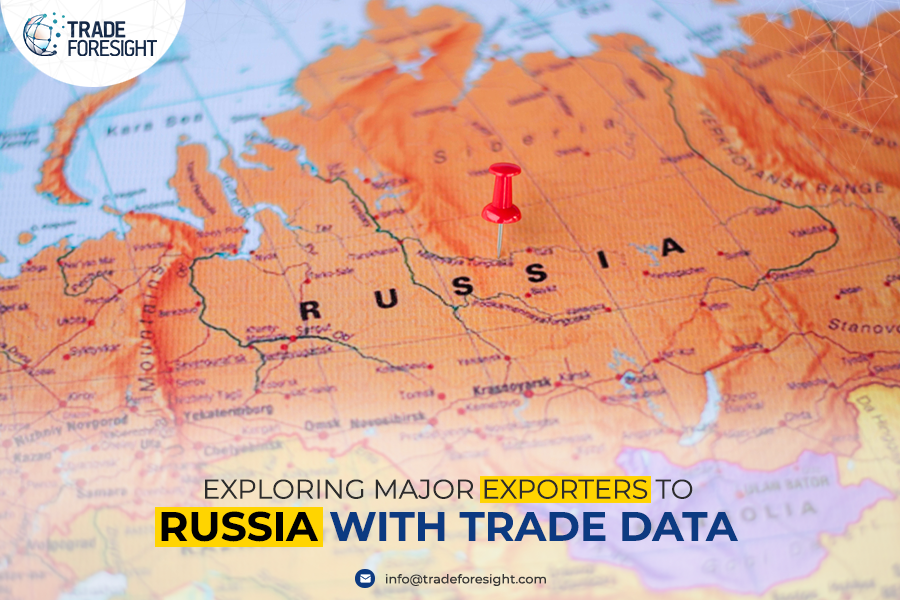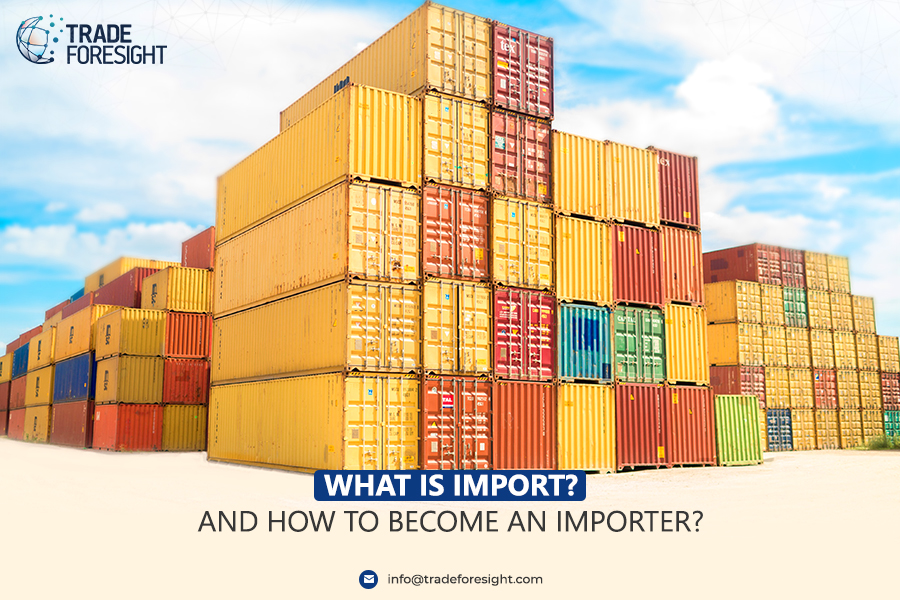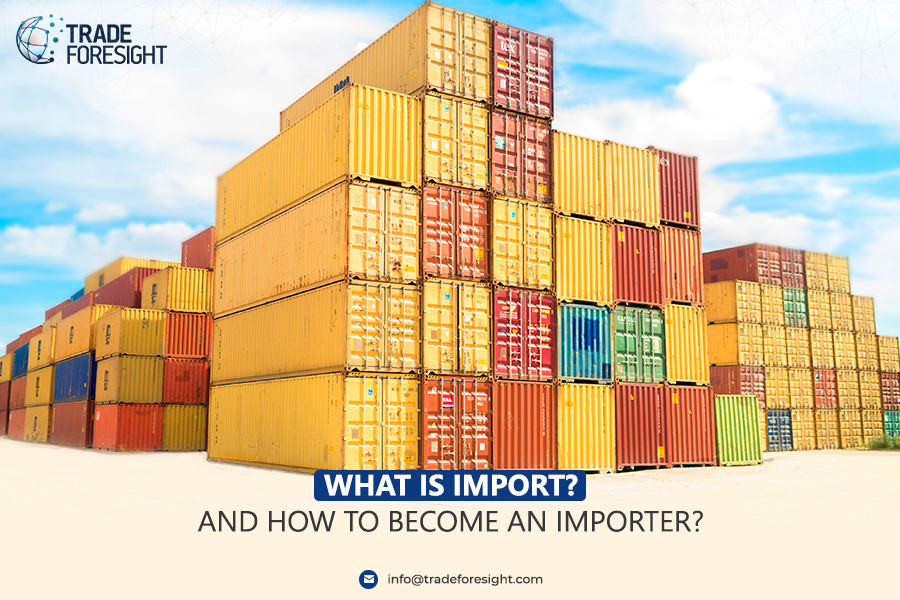
Russia is a significant player in the world economy, with its vast natural resources and strategic geographical location making it an important destination for many countries’ exports. The country is the world’s largest country, covering almost one-eighth of the earth’s surface, and its population of around 145 million people is spread over 11 time zones. It is a member of the BRICS group of emerging economies and the G20, which highlights its importance in the global economic landscape. In this blog, we will explore the major exporters to Russia and analyze their trade data to gain insights into the country’s trade patterns.
Russia’s Top Trading Partners
According to the World Bank, Russia’s top trading partners are China, Germany, the Netherlands, Belarus, and Italy. Together, these countries account for around 45% of Russia’s total trade. Other important trading partners include Kazakhstan, Turkey, South Korea, Poland, and the United States.
China:
China is Russia’s largest trading partner, accounting for around 15% of Russia’s total trade. Russia exports mainly natural resources to China, such as oil, gas, and timber, while China exports machinery, electronics, and textiles to Russia.
Germany:
Germany is Russia’s second-largest trading partner, accounting for around 10% of Russia’s total trade. Germany mainly exports machinery, cars, and chemicals to Russia, while Russia exports oil, gas, and metals to Germany.
Netherlands:
The Netherlands is Russia’s third-largest trading partner, accounting for around 8% of Russia’s total trade. The Netherlands mainly exports machinery, chemicals, and food products to Russia, while Russia exports mainly oil and gas to the Netherlands.
Belarus:
Belarus is Russia’s fourth-largest trading partner, accounting for around 7% of Russia’s total trade. Belarus mainly exports machinery and agricultural products to Russia, while Russia exports mainly oil and gas to Belarus.
Italy:
Italy is Russia’s fifth-largest trading partner, accounting for around 5% of Russia’s total trade. Italy mainly exports machinery, cars, and textiles to Russia, while Russia exports mainly oil and gas to Italy.
Analyzing Russia’s Trade Data
Let’s now dive deeper into Russia’s trade data to gain insights into its trade patterns. We will focus on the top five trading partners, as these countries account for almost half of Russia’s total trade.
China:
- Russia’s exports to China in 2020 were worth $41.6 billion, while its imports from China were worth $52.3 billion, resulting in a trade deficit of $10.7 billion.
- Russia’s top exports to China were crude petroleum, refined petroleum, and raw wood, which together accounted for around 70% of Russia’s total exports to China.
- China’s top exports to Russia were integrated circuits, petroleum gas, and broadcasting equipment, which together accounted for around 35% of China’s total exports to Russia.
Germany:
- Russia’s exports to Germany in 2020 were worth $24.5 billion, while its imports from Germany were worth $31.6 billion, resulting in a trade deficit of $7.1 billion.
- Russia’s top exports to Germany were crude petroleum, refined petroleum, and coal briquettes, which together accounted for around 60% of Russia’s total exports to Germany.
- Germany’s top exports to Russia were cars, medicaments, and machinery, which together accounted for around 40% of Germany’s total exports to Russia.
Netherlands:
- Russia’s exports to the Netherlands in 2020 were worth $21.1 billion, while its imports from the Netherlands were worth $19.3 billion, resulting in a trade surplus of $1.8 billion.
- Russia’s top exports to the Netherlands were crude petroleum, refined petroleum, and coal briquettes, which together accounted for around 80% of Russia’s total exports to the Netherlands.
- The Netherlands’ top exports to Russia were machinery, chemical products, and food products, which together accounted for around 50% of the Netherlands’ total exports to Russia.
Belarus:
- Russia’s exports to Belarus in 2020 were worth $13.5 billion, while its imports from Belarus were worth $9.7 billion, resulting in a trade surplus of $3.8 billion.
- Russia’s top exports to Belarus were refined petroleum, coal briquettes, and petroleum gas, which together accounted for around 50% of Russia’s total exports to Belarus.
- Belarus’ top exports to Russia were tractors, milk, and sugar, which together accounted for around 50% of Belarus’ total exports to Russia.
Italy:
- Russia’s exports to Italy in 2020 were worth $11.3 billion, while its imports from Italy were worth $10.3 billion, resulting in a trade surplus of $1 billion.
- Russia’s top exports to Italy were crude petroleum, refined petroleum, and coal briquettes, which together accounted for around 80% of Russia’s total exports to Italy.
- Italy’s top exports to Russia were machinery, cars, and pharmaceutical products, which together accounted for around 50% of Italy’s total exports to Russia.
Conclusion
In conclusion, Russia’s major trading partners include China, Germany, the Netherlands, Belarus, and Italy. These countries mainly trade in natural resources, machinery, and chemicals. Russia has trade deficits with China and Germany, but trade surpluses with the Netherlands, Belarus, and Italy. The top exports from Russia to these countries are crude petroleum, refined petroleum, and coal briquettes, while the top exports from these countries to Russia are machinery, cars, and chemical products. Understanding these trade patterns can help countries and businesses make informed decisions about their trade relations with Russia.






